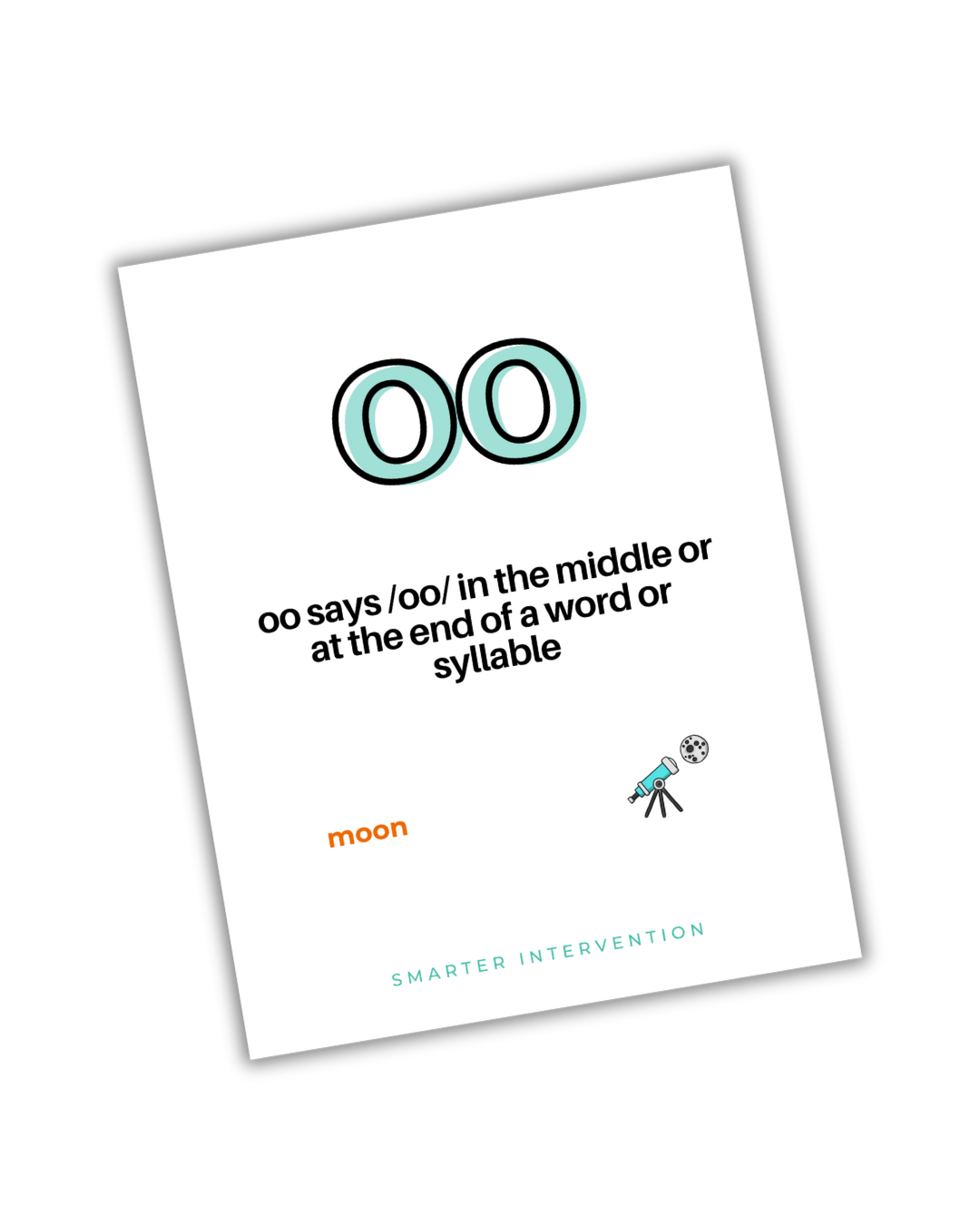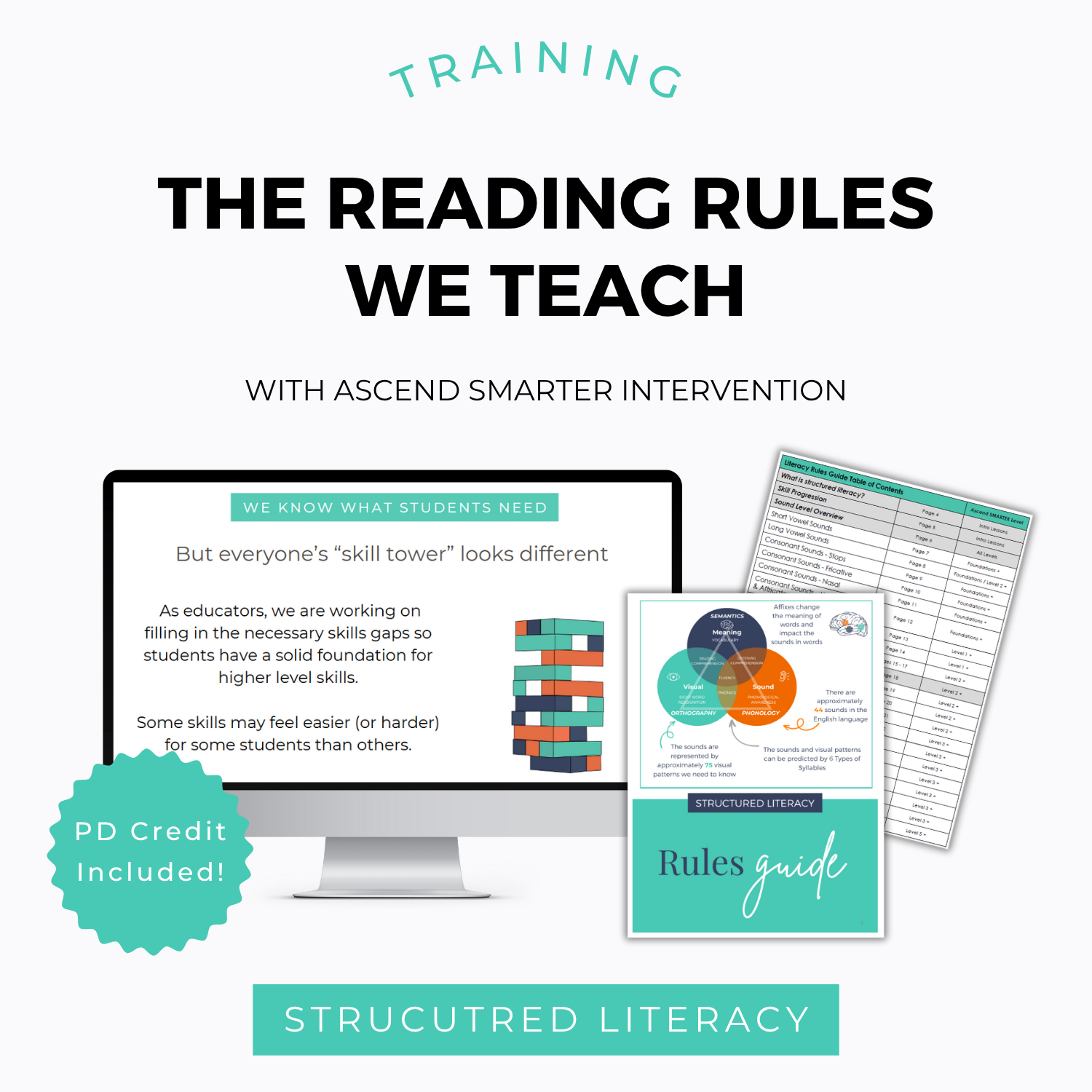How to Teach the OO Spelling Rule
The “oo” vowel team is a tricky one; it doesn’t just make one sound, but two distinct ones (as in moon vs. look). Without a clear rule, students often guess and miss the mark. Teaching when “oo” creates each sound provides clarity and builds spelling confidence for real-world reading and writing.
What Is the OO Rule?
The “oo” vowel team represents:
A “moon” sound (long /u/ as in moon, spoon)
A “look” sound (short /ʊ/ as in look, book)
To make the distinction memorable, we rely on the key phrase “Look at the Moon” 🔭🌛. This simple, visual anchor helps students recall that sometimes “oo” sounds like look (short sound) and sometimes like moon (long sound).
How We Teach the OO Vowel Team
We follow a comprehensive, multi-sensory literacy approach that mirrors the five core components - from sound to full writing.
1. Teach the Sounds in Isolation
Begin by helping students hear the two OO sounds. Get them saying and listening:
Look-sound (as in look, book)
Moon-sound (as in moon, spoon)
Incorporate multisensory tactics: write “oo” three times while saying both sounds, and trace the letters on textured surfaces to reinforce the pattern.
2. Connect to Syllable Structure & Spelling Options
Remind students that “oo” is a vowel team acting as a single sound. Show how spelling reflects sound:
In the middle of words, “oo” can sound like either look or moon.
The difference lies in pronunciation and context, not in syllable boundaries (since “oo” always stays together).
Using both the auditory and visual cues helps embed the rule more deeply.
3. Practice at the Word Level (with Vocabulary)
Start decoding one-syllable words:
First, words with the look-sound (book, wood)
Then, words with the moon-sound (food, cool)
As students advance, introduce multi-syllable words. Use these opportunities to build vocabulary, and pair each word with visuals or word sorts to reinforce meanings with spelling.
4. Practice at the Sentence Level
Move beyond isolated words:
Sentence Building – Have students craft short sentences using both oo target words (e.g., “We read a book about food.”)
Sentence Dictation – Dictate mixed oo sentences like, “She took a look at the moon.”
Sentence Combining – Join two sentences using oo words for flow and context.
This helps transition from practice to application and builds fluency.
5. Extend to Paragraph Writing
For students ready to stretch, prompt a short story or paragraph that weaves in both look and moon sounds, encouraging creativity while reinforcing spelling. This not only applies knowledge, but it also reveals where students might still be shaky.
Looking to teach oo in your lessons?
Grab our Free Phonics Rules Posters! They’re perfect for hanging in your classroom or using as a quick reference when introducing a new pattern (not only will you get the oo pattern, but tons of other patterns we teach too!).
Download Phonics Rules Posters » Get them here!
Want to see how we teach all the rules?
Check out our Spotlight PD: The Reading Rules We Teach (and Why They Matter!)
This 1-hour on-demand training provides you with everything you need to help you confidently teach the rules that actually move the needle, without getting lost in all the complexity.
You’ll get a clear, research-backed framework that shows which reading rules to focus on, why they matter for the brain, and how to teach them at each level—sound, syllable, word, sentence, paragraph, and passage.




